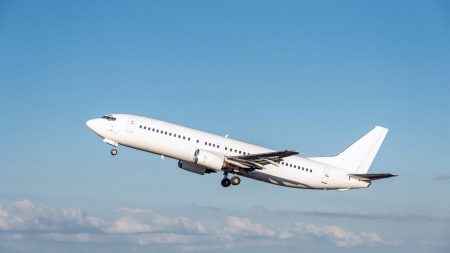Key takeaways
- Use points and miles to access travel opportunities that would otherwise be out of reach, such as international business- and first-class tickets.
- For the best deals, book luxury (or all-inclusive) hotels and resorts closer to home instead of in remote locations.
- If you’re traveling with your family or a large group, use hotel points for low-category extended stays.
- Compare points and cash values during peak travel seasons since you might still find a great deal. But for the best deals, consider traveling during off-peak seasons and being flexible with your travel dates.
If I had a point for every time I got asked about the best way to use points for travel, I’d have enough to fly around the world — twice. After over a decade in which I turned an interest in loyalty programs into a full-time job, I know how to stretch my points as far as possible.
When used correctly, points can be more valuable than cash. You can redeem them for virtually anything: A staycation at an extended-stay hotel or a first-class trip to the Maldives. You can plan a cross-country road trip with motel pit stops or literally fly around the world. The key is to know what your points are worth and use them wisely. As a general rule, you should aim to get at least 1 cent of value out of each point (though that won’t always be possible with hotel points).
If you’ve been saving up your points and wondering how best to use them for travel, we’ve got you covered. Here’s everything you need to know about maximizing value from your points and miles:
Quick stats on traveling habits
- 47% of U.S. adults are skipping summer vacations in 2024, according to Bankrate’s Summer Vacation Survey.
- 65% of U.S. adults not going on a summer vacation this year say they can’t afford it, according to Bankrate’s Summer Vacation Survey.
- 53% of Americans are planning a summer vacation in 2024; of that group, 36% are willing to go into debt to pay for it, according to Bankrate’s Summer Vacation Survey.
- 23 percent of American consumers surveyed by Arrivia intend to use points to defray the rising cost of travel. (arrivia)
1. Use points and miles for international business- and first-class tickets
International business- and first-class tickets typically offer the highest-value return for your points and miles. For example:
- A round-trip business-class ticket to Europe typically costs between 80,000 and 140,000 points or miles, while a cash fare for the same route will typically set you back about $5,000.
- An economy-class ticket to Europe typically costs between 30,000 and 60,000 miles round-trip, with cash fares often going as low as $400 during the off-peak season.
As you can see, you’re more likely to get the best value for your miles on a premium cabin redemption than economy class. However, international business- and first-class travel doesn’t just provide the highest redemption value for your rewards — it’s also not attainable without points and miles. That’s why they’re considered to be the best use of points and miles for travel; they allow you to keep your expenses low and access travel opportunities that would otherwise be out of reach.
Some of my best mileage redemptions have been flying business and first class. For example, a few years ago I booked a three-country trip to Asia for my family. My parents and two siblings joined me as we flew Cathay Pacific business class to Singapore and Bali. We stayed in five-star hotels, enjoyed several suite upgrades, then flew back in first class.
It was a memorable experience that I’ll never take for granted and my family talks about it to this day. The retail cost of that trip was well over $90,000 or $10,000 in economy class. Instead, I used around a million points and paid $1,500 out of pocket.
Starting your trip off on a comfortable note with a flatbed seat that lets you rest and enjoy a flight is a special experience that’s worth the splurge. The few times I’ve been able to share points and miles with family members have been the most rewarding.
2. Book luxury (or all-inclusive) hotels and resorts
Luxury hotels can offer tremendous value for your points. The Maldives, for example, is a popular destination for maximizing hotel points. Hotels in the Maldives can cost well over $1,000 per night, making them a great place to use hotel points and free night awards.
But one aspect that often gets overlooked is that these “free” luxury hotel stays often come with many additional expenses. Even if you redeem points for your hotel room, food can be expensive in these remote destinations, while boat and seaplane transfers can cost over $500 per person. Unless you were planning to pay out of pocket for the room anyway, you may not save much money on this type of redemption.
A high-value alternative would be to book all-inclusive hotels closer to home (i.e. Mexico and the Caribbean). Hyatt, Hilton and Marriott all have all-inclusive resorts that require a reasonable amount of points. Hyatt’s all-inclusive hotels start at 12,000 points per night (during off-peak season). You can easily accumulate enough points for five nights using the welcome bonus from The World of Hyatt Credit Card* or Chase Sapphire Preferred® Card, which earns Ultimate Rewards points that can be transferred to your World of Hyatt account.
To elaborate, the World of Hyatt Credit Card currently offers up to 60,000 bonus points — you can earn 30,000 points after spending $3,000 in the first three months of account opening, plus up to 30,000 more points by earning 2X points on purchases (that normally earn 1X points) during the first six months after opening the card (on up to $15,000). The Chase Sapphire Preferred, on the other hand, currently offers 60,000 bonus points after you spend $4,000 in the first three months of account opening.
It’s worth noting this 12,000-point rate is for two people per room. Hyatt charges an extra 6,500 to 29,000 points per night for each additional person staying in the same room.
Money tip: Sometimes it’s best to just pay cash for the third or fourth person in a room at an all-inclusive resort, particularly if those extra people are children. The resort may very well offer a child’s rate that makes using points not a high-value option.
The great thing about Hyatt’s all-inclusive hotels is that all meals and accommodations are included, making it possible to check out with a $0 bill. That’s not always possible at luxury resorts, where even a trip to the minibar can put a serious dent in your wallet. All-inclusive hotels like these are ideal for budget-conscious travelers who want to enjoy themselves without going overboard.
3. Use hotel points for low-category extended hotel stays for families and large groups
There’s more than one way to get value out of hotel points. This may not be a popular opinion, but I’m a firm believer that extended-stay hotels can be an excellent use of points.
Extended-stay hotels tend to be low-category properties, often requiring a fraction of the points required by their luxury counterparts. But lower redemption rates don’t impact value, because paid rates can be quite steep.
For example, on a recent trip to Salt Lake City, the Hyatt House in downtown was going for $414 per night (before taxes). Instead of paying this astronomical rate, I redeemed 8,000 Hyatt points, for a value of over 5 cents per point. Bankrate values Hyatt points at about 2.3 cents each, making this an exceptional redemption.
In addition, extended stay hotels often provide high-value perks that will improve your hotel experience. Complimentary breakfast is typically standard at these types of properties, along with free or cheap parking. Thanks to larger beds and additional sofas, these hotels can usually accommodate more than two guests per room. This makes extended-stay properties ideal for families and large groups, allowing them to fit into one room instead of two.
4. Look for great deals on peak travel bookings
During peak travel seasons — including summer, spring break and the holidays — everything from airfare to hotel rates skyrockets. This can be a great time to utilize points and miles to keep your costs down.
It’s worth noting that an increasing number of airline and hotel loyalty programs — many of which are highlighted in Bankrate’s travel toolkit — are moving toward dynamic pricing. That means redemption rates will fluctuate based on the cost of airfare and room rates. However, you can still put your points and miles to good use in spite of dynamic pricing.
Hotel loyalty programs serve as an example of how these redemptions can work out favorably. For example, a stay at the Westin New York Grand Central over Christmas and New Year’s could cost well over $6,000. The same stay could run you roughly 480,000 Marriott Bonvoy points, giving you a value of 1.25 cents per point. That’s a fantastic value for a Marriott redemption, since Bankrate values them at an average of 2.3 cents each.
Award pricing goes up during peak travel season, but that doesn’t mean the math won’t add up favorably. It’s always best to compare redemption rates against cash prices (and Bankrate’s valuations) to determine if that’s the case. Recently, I was able to book a $750 domestic United flight for just 20,000 Aeroplan points, getting me well over 3.75 cents per point on a peak-travel economy class ticket.
5. Travel during off-peak seasons and be flexible with your travel dates
While expensive peak-season travel bookings can increase the value of your rewards, off-peak award redemptions can save you points and miles.
Case in point: American Airlines is one of the few major airlines that still publishes an award chart, which includes off-peak travel dates for its own awards and partner awards. You may be able to save around 20 percent on an award ticket by traveling during the off-season. For example, a one-way economy class fare to Europe typically costs 30,000 miles. The same award costs about 22,500 miles if you’re willing to travel during off-peak dates.
The same goes for fare-based programs like Southwest Rapid Rewards. By searching through the airline’s low-fare calendar, you can score incredible deals on off-peak award tickets. If you can be flexible with your travel dates, you can stretch your points and miles even further by booking off-peak travel.
6. Look for sweet-spot redemptions with different airlines and hotels
Sweet-spot awards are one of the best-kept secrets of airline and hotel loyalty programs. A “sweet spot” refers to an award that’s offered at a significantly lower price compared to most other programs. Familiarizing yourself with sweet-spot redemptions is a great way to get more travel out of a limited points or miles balance.
For example, United MileagePlus often requires over 160,000 miles for a round-trip business class ticket to Europe. Meanwhile, fellow Star Alliance carrier All Nippon Airways (ANA) requires just 100,000 miles for the same flight. ANA also gives you a free stopover on these awards itineraries, allowing you to book time in multiple places for the cost of one trip.
Award tickets to Hawaii are always in demand, and even off-peak travel from the West Coast can cost 40,000 AAdvantage miles or more per round-trip. However, British Airways Executive Club has a sweet spot for West Coast travelers starting at just 13,000 Avios each way.
Air France and KLM’s joint loyalty program, Flying Blue, doesn’t get much mainstream recognition, but it’s packed with sweet spots that can save you miles and cash. For instance, you can book a round-trip ticket between the U.S. and North Africa for just 100,000 miles. Considering most other programs require 160,000 or more miles for the same award, that’s a fantastic deal.
Money tip: If you’re interested in Flying Blue, be sure to check out its monthly Promo Rewards. These award tickets are discounted by as much as 50 percent, and they present an excellent way to stretch your rewards further.
7. Take advantage of consecutive-night discounts
Numerous hotel loyalty programs offer the fourth or fifth night free when you book consecutive nights. By booking longer stays, you can stretch your hotel points much further.
As an example, Marriott Bonvoy offers the fifth night free on award stays for all members, while Hilton Honors limits this benefit to co-branded credit cardholders and those who earn Silver Elite status or higher. Additionally, IHG One Rewards offers the fourth night free on consecutive-night bookings for members with an IHG co-branded credit card like the IHG One Rewards Club Premier Credit Card*.
8. Redeem rewards for “good-enough” value when needed
While following the above advice will ensure maximum value for your points and miles, you should use your rewards however you see fit. If redeeming Chase Ultimate Rewards points for a New Orleans ghost tour makes you happy, then go for it. If using your American AAdvantage miles for a rental car keeps cash in your pocket, do it.
While the best way to use points and miles usually involves international business- and first-class flights, the best way for you to use your own points and miles may differ. Your rewards are yours to use, so you may want to ignore what the influencers are doing and do whatever works best for you.
However, points and miles devalue over time — they may even expire after an extended period — so the absolute best way to redeem them is as quickly as possible, for the best value you can get. Don’t hoard them, and don’t let them accumulate and devalue before you have a chance to use them.
Furthermore, consider redeeming a few thousand miles for lower-value awards like gift cards if they’re about to expire. That way, your account stays active and you’ll trade just a few miles to keep the rest of your balance from expiring
FAQs
-
Credit card points and miles are rewards that you can earn for eligible credit card spending. These types of rewards are usually earned with travel credit cards.
-
Whenever you swipe your travel rewards credit card, you’ll earn points or miles for all eligible purchases. For example, you might earn a higher points or miles rate in select categories (such as airfare, rideshares or dining) along with a fixed rate on all other purchases.
-
Many points and miles cards allow you to redeem your rewards for different types of travel, cash back, merchandise and gift cards, but redemption options will vary from card to card. Since credit card points and miles are usually a feature of travel credit cards, you’ll typically get the best value for travel redemptions.
The bottom line
The best way to use points and miles for travel comes down to your personal preferences. However, by redeeming them strategically, you can stretch their value further. Take advantage of sweet spot awards, splurge on luxury travel and redeem your points either during peak or off-peak travel seasons.
By planning ahead and comparing cash rates to award prices, you can save money on travel and get the most value from your points and miles.
*The information about the World of Hyatt Credit Card and the IHG One Rewards Club Premier credit card has been collected independently by Bankrate.com. The card details have not been reviewed or approved by the card issuer.
Read the full article here










